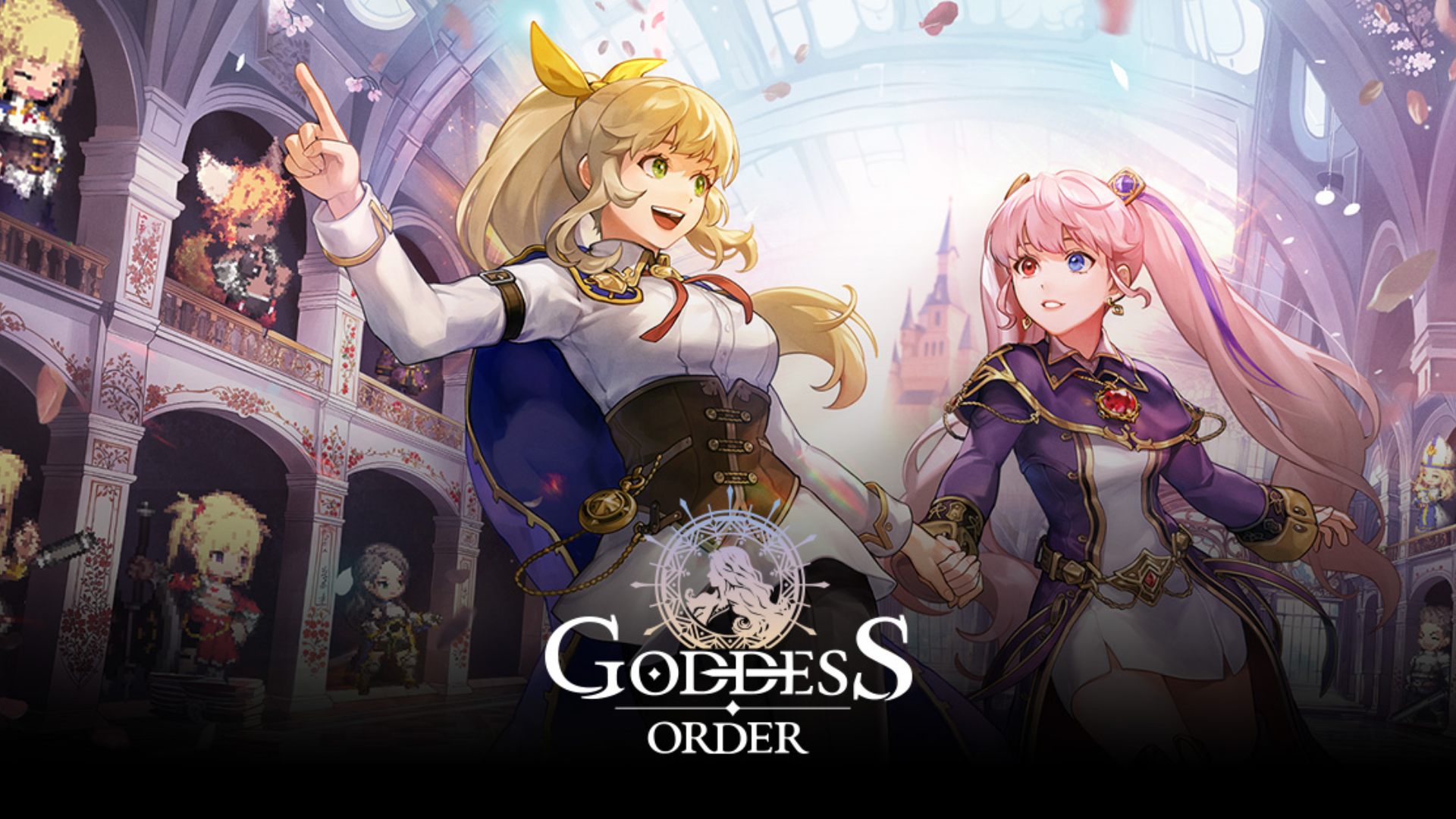Goddess Order Reroll Guide: Best Characters to Summon and How to Reroll Fast
Rerolling in Goddess Order offers new players a significant advantage by securing top-tier SSR knights from the start, making early progression through story stages, boss encounters, and competitive content considerably smoother. With a 2% base SSR rate and a 150-pull spark system, rerolling strategically ensures you begin your journey with meta-defining characters rather than settling for weaker SR units that fall off in late-game content.
How to Reroll Fast
The reroll process in Goddess Order takes approximately 5-10 minutes per cycle initially, dropping to 2-3 minutes once you master skipping dialogue and tutorials. Following the most efficient method dramatically reduces time investment while maximizing your chances of landing premium SSR knights.
Step-by-Step Reroll Process
Start by launching Goddess Order using a guest account rather than binding immediately, as this saves significant time during multiple reroll attempts. Play through the tutorial stages until Stage 0-3 unlocks the gacha system and mail function, which provides your initial summoning currency. After claiming all rewards from your inbox and redeeming available codes, head to the summon menu and pull from the Rising Star banner first, followed by the Rate Up banner if resources remain.
If the results don’t include your target characters, navigate to Settings → Account and select “Delete User Data” to wipe your progress and create a fresh guest account. After your first complete cycle, you can skip the tutorial in subsequent attempts, reducing each reroll to just 2-3 minutes. Most players require 20-50 attempts to secure ideal starting units, though luck varies significantly.
Using Emulators for Faster Rerolls
Players seeking maximum efficiency should consider using LDPlayer or similar Android emulators on PC, which offer multi-instance functionality that allows simultaneous rerolling across multiple accounts. Create several emulator instances through the LDMultiplayer tool, sync all copies using the Synchronizer feature, and perform identical reroll actions across all instances simultaneously. This approach can reduce total reroll time to under one hour for securing premium SSR characters compared to several hours on mobile devices.
Best Characters to Reroll For
Targeting the right characters during rerolls makes the difference between struggling through early content and dominating both PvE story progression and competitive PvP arenas. The top reroll priorities focus on versatile SSR knights who excel across multiple game modes and provide long-term value.
Top Priority Targets (Must-Have)
Scarlet stands as the undisputed best reroll target for new players, dominating PvE content as an S+ tier Fighter who applies burn damage over time while generating consistent DPS throughout extended boss encounters. Her fire-focused kit activates powerful Solidarity Skills when paired with Dana, and her invincibility frames during certain attacks provide defensive utility that keeps her alive during difficult story stages. Scarlet remains relevant throughout the entire game, performing exceptionally in early, mid, and late-game PvE while maintaining respectable A-tier viability in competitive PvP.
Clerant earns her position as a meta-defining Trickster who excels equally in both PvE and PvP through her freeze mechanics and CRIT damage amplification. Her rippling water attacks inflict stacking freeze debuffs that slow enemy movement and interrupt attack patterns, while her Lake Blade’s Edge ultimate reduces enemy CRIT resistance and deals massive burst damage. Clerant’s Hold Skill grants invincibility frames that allow players to dodge boss mechanics safely, making her invaluable for challenging content. Her versatility across all game modes makes her the single best reroll target if Scarlet is unavailable.
Fenchela provides exceptional value as an S+ tier Slayer in both PvE and PvP, specializing in explosive single-target burst damage with CRIT scaling that shreds bosses faster than any other knight. Her dodge mechanics and invincibility windows make her lethal in arena duels, where she can avoid counterattacks while delivering devastating combos. Fenchela’s universal excellence across game modes places her among the top three reroll priorities alongside Scarlet and Clerant.
Secondary Targets (Excellent Starters)
Dana complements Scarlet by providing healing, attack buffs, and Fire damage amplification that activates Scarlet’s Solidarity Skill bonuses. Leticia dominates arena combat as the top PvP character while maintaining strong PvE performance through her energy-efficient Electric attacks and status effect application. Grace serves as the best SR support character, making her an excellent reroll target when paired with Clerant for enhanced team synergy.
Characters to Avoid During Rerolls
Lisbeth receives special mention as the free SSR Fighter provided at the start of the game. While she performs well during the tutorial and early stages with solid mobility and CRIT scaling, she falls off significantly in late-game content compared to premium SSR options. Never settle for a reroll that only provides Lisbeth, as you already own her by default.
Lower-tier SSR characters like Jan, Gilbert, Dionis, Etna, Violet, Vicky, Aragon, Tia, and Olivet function adequately but lack the scaling, versatility, or team synergy needed to justify spending hours rerolling. If your summons yield only these characters without any top-tier picks, continue rerolling rather than settling for a mediocre start.
Optimal Reroll Outcomes
Your ideal reroll result depends on how much time you’re willing to invest and your preferred playstyle focus. Understanding realistic expectations helps you decide when to stop rerolling and begin playing.
Minimum Acceptable Results
Single Top-Tier SSR: Obtaining any one of Scarlet, Clerant, or Fenchela constitutes a strong starting account worth keeping. These three characters carry teams through virtually all content and remain meta-relevant long-term.
Top SSR Plus Strong SR: Landing one premium SSR like Scarlet alongside the best SR support Grace creates excellent team synergy that accelerates early progression. This combination provides both damage and sustain for balanced compositions.
Ideal Reroll Results
Two Complementary SSRs: Securing both Scarlet and Dana provides the strongest possible PvE foundation through their Fire synergy, healing, and sustained burn damage. Alternative excellent pairs include Clerant + Grace for freeze control and buff extension, or Fenchela + Leticia for dual burst damage across PvE and PvP.
Three SSR Characters: While rare, pulling three SSR units from starter resources creates an immediate complete team. Any combination featuring at least one S+ tier character alongside two additional SSRs provides tremendous value.
Banner Selection Strategy
Goddess Order offers two main banners during the reroll process: Rising Star (beginner banner) and Rate Up (featured banner). The Rising Star banner provides a guaranteed SSR within 10 pulls and allows you to select one specific SSR character after summoning, making it the highest priority for rerollers. Pull from Rising Star first to secure your guaranteed SSR, then use remaining resources on the Rate Up banner if it features desirable characters like Scarlet or Clerant.
The standard Knights of Prophecy banner features an 80-pull guaranteed SSR but yields better long-term value than the 150-pull Rate Up banner unless you can guarantee the featured character. During rerolls, prioritize Rising Star for its efficiency, then evaluate whether your remaining pulls should target Rate Up or standard based on your current roster.
Post-Reroll Actions
Once you secure satisfactory results, immediately bind your account through Google, Apple, or Kakao integration to prevent data loss. Save remaining summon tickets and diamonds for future event banners featuring new meta characters rather than spending everything immediately. Focus resources on upgrading your core team through the Knight Order account level system, which caps character levels, relic equipment, and overall power progression.


